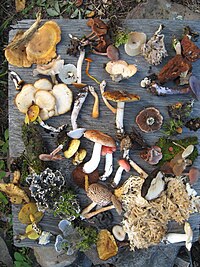
Photo from wikipedia
Simultaneously investigating variation in species richness and turnover for indigenous and introduced communities holds great promise as a means to understand the relative contributions of ecological processes to community structure.… Click to show full abstract
Simultaneously investigating variation in species richness and turnover for indigenous and introduced communities holds great promise as a means to understand the relative contributions of ecological processes to community structure. Such insight will advance understanding of the ways in which environmental change may affect future community dynamics. Using a recently developed multi-site turnover metric, zeta diversity (f), we explored species turnover patterns across indigenous and introduced insect and vascular plant communities of the Southern Ocean Islands. In addition, we used updated species occurrence and high-resolution environmental data to reexamine previously described patterns and drivers of species richness across the region. Species richness variation in indigenous insect and vascular plant communities was largely explained by island isolation and temperature, whereas human visitation frequency was strongly associated with introduced species diversity of both groups. Indigenous communities of both plants and insects had faster rates of species turnover across sites and less inter-island connectivity than their introduced counterparts. Zeta diversity analyses suggested that stochastic processes were more influential than niche-related processes on the observed patterns of turnover of indigenous insects. Meanwhile, turnover patterns of introduced insects and indigenous and introduced vascular plants were indicative of the dominance of niche-related processes. These outcomes highlight very different diversity patterns across indigenous and alien communities and indicate that different ecological processes may underlie diversity variation across these islands and taxonomic groups.
Journal Title: Ecosphere
Year Published: 2018
Link to full text (if available)
Share on Social Media: Sign Up to like & get
recommendations!